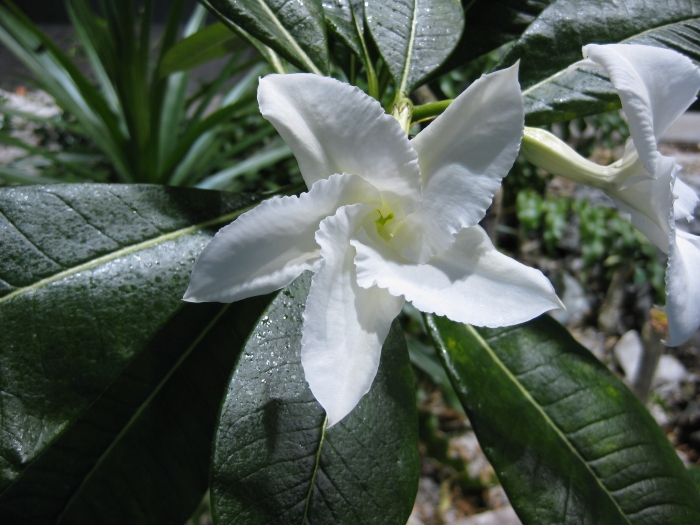Madagascar Palm
(Pachypodium lamerei)
Madagascar Palm (Pachypodium lamerei)
/
/

Gürkan Sengün
CC BY-SA 3.0
Image By:
Gürkan Sengün
Recorded By:
Copyright:
CC BY-SA 3.0
Copyright Notice:
Photo by: Gürkan Sengün | License Type: CC BY-SA 3.0 | License URL: https://creativecommons.org/licenses/by-sa/3.0 | Uploader: Gürkan Myczko | Publisher: Wikimedia Commons | Title: Pachypodium_lamerei_flower.jpg | Notes: {{Information |Description={{en|1=Prairie Groundsel (Packera plattensis) in bloom in Iowa City, Iowa, in late May.}} |Source=Own work by uploader |Author=[[User:Douglas W. Jones|Douglas W. Jones]] |Date=2009-05-21 |Permission={{PD-user-en|Douglas W. Jones




























Estimated Native Range
Summary
Pachypodium lamerei, commonly known as Madagascar Palm, is a semi-deciduous stem succulent native to the arid and subarid regions of southern and southwestern Madagascar. Despite its common name, it is not a true palm but a member of the Apocynaceae family. It typically grows in open, rocky terrain where it can reach up to 6 meters (20 feet) outdoors. The plant’s tall, silvery-gray trunk is covered with sharp 6.25 cm spines, and long, narrow leaves grow only at the top of the trunk, resembling a palm tree. It rarely branches. When grown indoors, it will slowly reach 1.2–1.8 meters (3.9–5.9 feet) tall. The Madagascar Palm produces large, white, fragrant flowers at the top of the plant, which are particularly showy and can be a focal point in the landscape.
The Madagascar Palm is valued for its unique, sculptural appearance and is often used as a specimen plant in xeriscapes, rock gardens, and as a potted houseplant. It is also prized for its drought tolerance and low maintenance requirements. In cultivation, it thrives in warm climates and requires full sun to part shade. It is not frost-tolerant and will likely drop most of its leaves if exposed to even a light frost. A fast-draining potting mix, such as a cactus mix, is essential, and the container must have drainage holes to prevent root rot. Overwatering is a common issue and should be avoided. The plant has earned the Royal Horticultural Society’s Award of Garden Merit, indicating its value in ornamental horticulture.CC BY-SA 4.0
The Madagascar Palm is valued for its unique, sculptural appearance and is often used as a specimen plant in xeriscapes, rock gardens, and as a potted houseplant. It is also prized for its drought tolerance and low maintenance requirements. In cultivation, it thrives in warm climates and requires full sun to part shade. It is not frost-tolerant and will likely drop most of its leaves if exposed to even a light frost. A fast-draining potting mix, such as a cactus mix, is essential, and the container must have drainage holes to prevent root rot. Overwatering is a common issue and should be avoided. The plant has earned the Royal Horticultural Society’s Award of Garden Merit, indicating its value in ornamental horticulture.CC BY-SA 4.0
Plant Description
- Plant Type: Tree
- Height: 10-20 feet
- Width: 3-8 feet
- Growth Rate: Slow
- Flower Color: Yellow, White
- Flowering Season: Summer
- Leaf Retention: Semi-Deciduous
Growth Requirements
- Sun: Full Sun, Part Shade
- Water: Low
- Drainage: Medium
Common Uses
Drought Tolerant, Low Maintenance, Showy Flowers
Natural Habitat
Arid and subarid regions of southern and southwestern Madagascar
Other Names
Common Names: Palmeira-De-Madagascar, Paquipódio, Ökenstjärna
Scientific Names: , Pachypodium lamerei, Pachypodium champenoisianum, Pachypodium lamerei var. lamerei, Pachypodium rutenbergianum f. lamerei, Pachypodium rutenbergianum var. lamerei,
GBIF Accepted Name: Pachypodium lamerei Drake